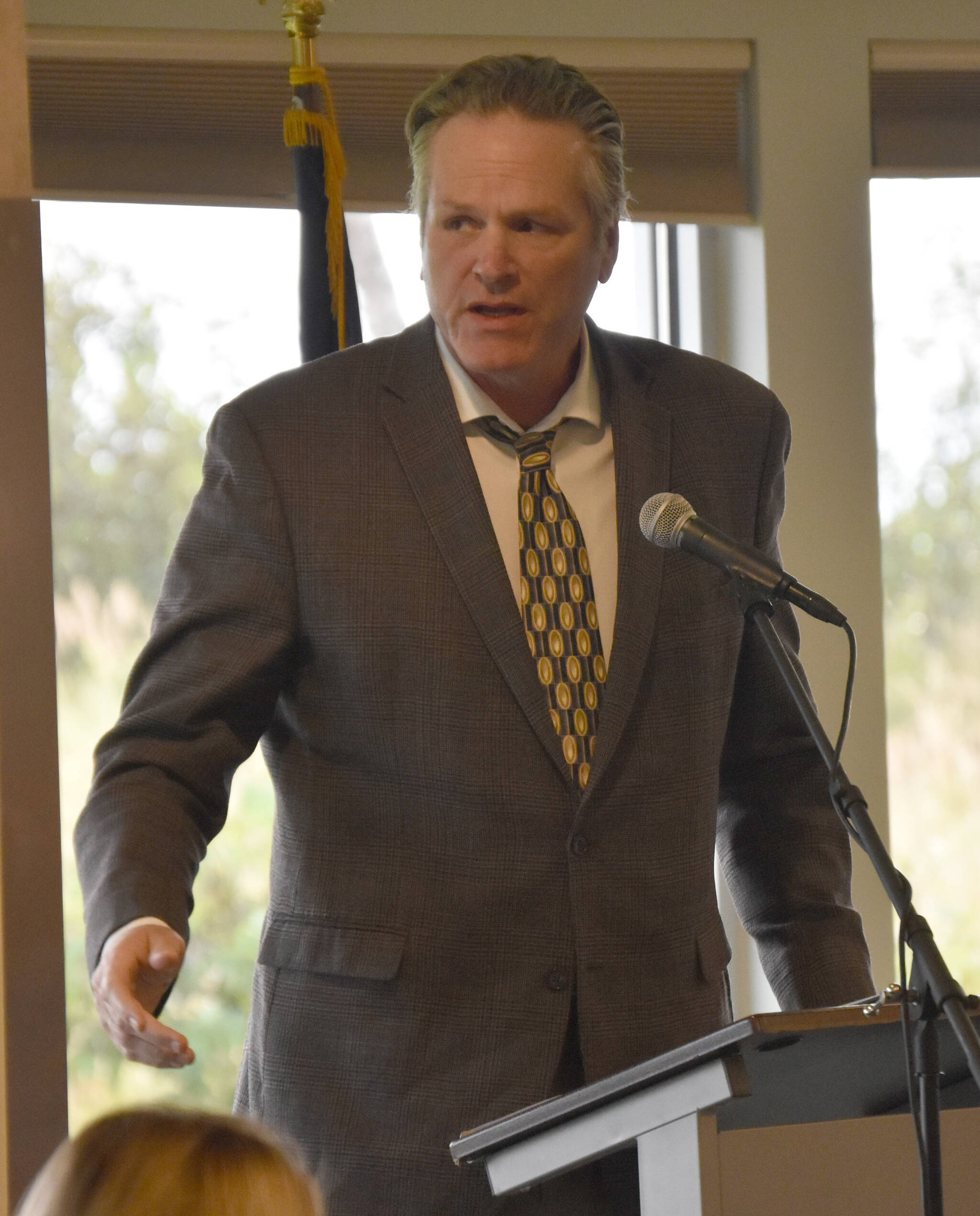Roughly 40 yards from where the Kenai Senior Center’s backyard is eroding into the Kenai River, residents and officials from all levels of government gathered to celebrate a significant step forward for a bluff stabilization project decades in the making.
The City of Kenai and the U.S. Department of the Army signed a project partnership for the Kenai Bluff Stabilization Project on Monday night that allows construction of a berm at the toe of the bluff to go out to bid and for construction on that berm to begin. Kenai has worked to mitigate the impacts of its crumbling bluff — which erodes by about 3 feet each year — for more than 60 years.
The U.S. Army Corps of Engineers in a March 2019 feasibility study recommended the construction of a protective rock berm at the toe of the bluff as the preferred way of mitigating bluff erosion. The berm will stretch about 5,000 feet, from the mouth of the Kenai River to about the location of Pacific Star Seafoods, near the city dock.
In all, the project is expected to cost about $41.6 million. Over the last two years, the city secured $28 million via Sen. Lisa Murkowski through the federal Infrastructure Investment and Jobs Act and $6.5 million from the State of Alaska’s capital budget. Kenai has also received $3.2 million in additional grants.
The project got another boost from the federal Water Resources Development Act of 2022, under which the proportion of project costs the City of Kenai was expected to cover decreased, from 35% to 10%. Accordingly, the proportion of project costs to be covered by the federal government went up, from 65% to 95%. The Corps covered that increase with money from the Infrastructure Investment and Jobs Act.
Kenai Mayor Brian Gabriel opened Monday’s project partnership agreement signing ceremony by summarizing the history of work on bluff erosion that led to the partnership agreement and thanked those who helped make the project possible. He called the signing an “important milestone” in the city’s history and said it was “surreal” to be attending the ceremony.
“I’m kind of nervous about this because it’s been so long,” Gabriel said. “I mean it’s almost surreal that I’m standing up here and actually saying these words in front of these fine folks here (and) to get this close to actually having this signed.”
Gov. Mike Dunleavy said he and Jill Schafer, who runs Dunleavy’s Soldotna office, surveyed the bluff before the ceremony and could see that it was obviously eroding. Dunleavy after the most recent session of the Alaska Legislature approved as part of the state’s capital budget $6.5 million for the project.
“We were standing out there earlier — Jill and myself — and we were looking at the bluff and it’s pretty obvious that the river is aimed right toward this amazing setting, this amazing place where a lot of our elders are today,” Dunleavy said. “It’s about time that this is going to be rectified.”
Attendees also heard from Michael Connor, the assistant secretary of the Army for civil works, and Col. Jeff Palazzini, commander of the U.S. Army Corps of Engineers’ Alaska District.
Connor said he is tasked with overseeing the Corps and making decisions about how the agency allocates resources. Among the reasons the Kenai bluff stabilization project is so important to the Corps, he said, is because it protects the local community, because previous work on the project has occurred at all levels of government and because it is fully funded.
“It’s a beautiful facility,” Connor said of the Kenai Senior Center. “This, as well as the rest of the infrastructure and the coastline itself is well worth protecting (and) well in need of protection.”
With the project partnership agreement signed, construction on the Kenai Bluff Stabilization Project is expected to begin next year.
Also in attendance at Monday’s ceremony were representatives from the offices of U.S. Sens. Lisa Murkowski and Dan Sullivan, Alaska Rep. Justin Ruffridge, Alaska Sen. Jesse Bjorkman, Kenai City Council members and others.
The Peninsula Clarion’s Jeff Helminiak contributed reporting.


